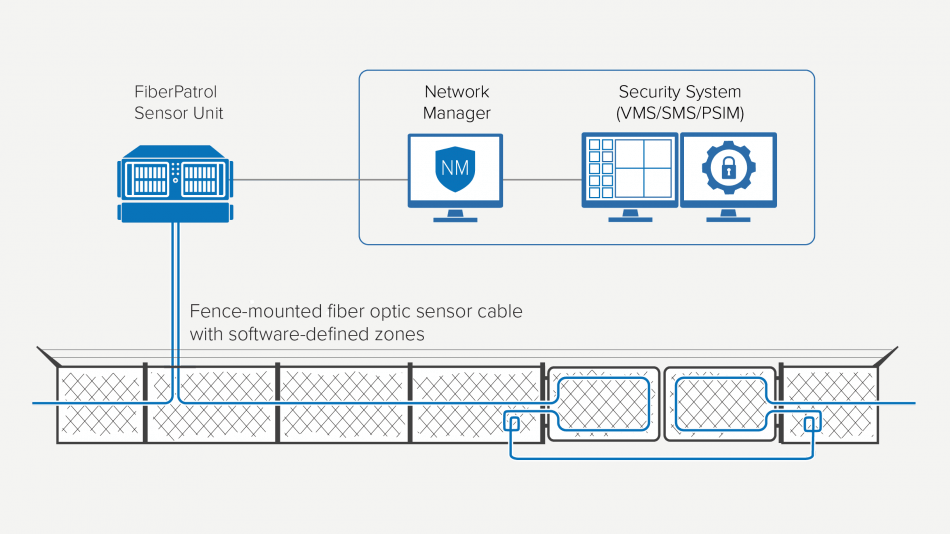Secure Your Building With Reliable Fiber Optic Safety And Security Solutions
In an era where security threats are increasingly sophisticated, the need for reliable security remedies is extremely important. Fiber optic safety systems attract attention by using extraordinary integrity and efficiency, leveraging innovative light transmission modern technology to boost surveillance capacities. These systems not only supply resistance to electromagnetic disturbance but additionally assure long-lasting expense efficiency via decreased upkeep demands. However, the decision to purchase such a service involves careful factor to consider of various aspects. Understanding the ins and outs of fiber optic safety and security can brighten the path to protecting your building extra properly. What elements should be checked out to maximize your investment?
Benefits of Fiber Optic Protection
Fiber optic safety services offer a series of benefits that make them increasingly vital in today's electronic landscape. Among the most substantial advantages is their superior bandwidth ability, which enables the transmission of big amounts of information over cross countries without considerable signal destruction. This capacity is especially advantageous for protection systems that rely upon high-definition video clip monitoring and real-time monitoring.
Additionally, fiber optic wires are naturally a lot more protected than traditional copper electrical wiring. They are immune to electro-magnetic interference, making them much less susceptible to hacking or eavesdropping. This improved safety is vital for securing delicate data and keeping the stability of security systems.
Furthermore, optical fiber are more sturdy and resistant to ecological aspects, such as wetness and temperature variations, making sure lasting integrity and reduced upkeep expenses. The light-weight nature of fiber optic cords additionally simplifies setup processes, enabling better flexibility in system design.
Just How Fiber Optic Systems Job
In modern protection applications, the operation of fiber optic systems relies upon the concepts of light transmission through flexible glass or plastic fibers. These fibers are developed to bring light signals over cross countries with minimal loss, making them excellent for transferring data connected to security tracking. The core of the fiber, bordered by a cladding material, ensures that light signals continue to be consisted of within the core with a phenomenon called complete interior representation.
When incorporated into safety and security systems, fiber optic wires can transfer data from different sensors, such as cams, movement detectors, and alarms, to a central surveillance terminal. The high bandwidth ability of fiber optics allows for the transmission of big amounts of information all at once, allowing real-time monitoring and timely action to prospective dangers.

Kinds Of Fiber Optic Protection Solutions
Numerous kinds of fiber optic safety solutions have actually arised to boost monitoring and security across various atmospheres. One popular remedy is fiber optic perimeter invasion discovery systems (PIDS), made to keep an eye on and secure building boundaries through the detection of resonances and disruptions along fiber optic cables. These systems supply real-time informs, allowing prompt responses to unapproved access attempts.
An additional efficient solution is fiber optic video monitoring. This innovation leverages high-def cameras linked via fiber optic cable televisions to send video clip data over fars away without substantial loss of high quality. This arrangement is particularly advantageous in large areas, such as airports and commercial sites, where standard copper cable televisions might falter.
Furthermore, fiber optic sensing units are progressively utilized for ecological monitoring, finding adjustments in temperature, pressure, or acoustic signals that could indicate protection violations or harmful conditions. These sensing units offer high level of sensitivity and accuracy, making them suitable for essential framework protection.

Installation and Upkeep Tips
Efficient installation and maintenance of fiber optic safety and security services are crucial for guaranteeing their optimum performance and longevity. Fiber optic wires ought to be routed firmly, avoiding sharp bends or twists that can compromise their integrity.
Throughout setup, it is advisable to conduct comprehensive screening of the system to validate that all elements are operating properly. Routine upkeep checks should be set up to evaluate the fiber optic cords for any type of signs of wear or damage, along with to ensure that connections continue to be protected. Cleansing the connectors occasionally is likewise vital to stop signal loss as a result of dirt or debris.
In addition, keeping an updated stock of set up components and their specifications can promote simpler troubleshooting and upgrades. By adhering to these installation and maintenance tips, homeowner can optimize the effectiveness of their fiber optic safety and security remedies, ensuring a trustworthy protection against potential hazards.
Contrasting Costs and Performance
When assessing fiber optic safety options, understanding the equilibrium between prices and efficiency ends up being critical (security fibers). Organizations must consider the ahead of time investment, recurring maintenance expenses, and the long-term value these systems provide. While fiber optic systems might need a greater first setup cost contrasted important source to conventional copper wiring, their resilience and lowered vulnerability to electromagnetic interference frequently equate to lower maintenance expenses in time
Effectiveness is another crucial variable; fiber optic safety systems offer improved information transmission rates and enhanced dependability. They can cover larger ranges without signal degradation, making them optimal for large properties or remote areas. Furthermore, the high data transfer capacity supports innovative safety applications, such as high-def video surveillance and real-time surveillance, which are vital for thorough security management.
Inevitably, the choice between price and performance ought to be guided by specific security requirements and take the chance of assessments. Organizations must assess their one-of-a-kind needs, taking into consideration factors like building size, protection dangers, and technical innovations. By conducting a comprehensive cost-benefit evaluation, stakeholders can make educated decisions that align with their security purposes while making certain a sound investment in fiber optic innovation.
Verdict
In final thought, fiber optic safety options offer significant benefits in terms of performance, dependability, and resistance to environmental disturbances. Inevitably, the adoption of fiber optic innovation represents a forward-thinking strategy to guarding homes against progressing protection hazards.